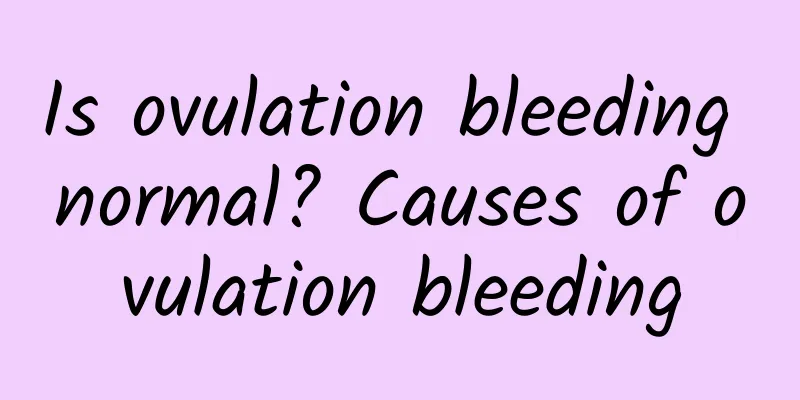Is ovulation bleeding normal? Causes of ovulation bleeding

|
Some women will have a small amount of bleeding during ovulation, which is called ovulation bleeding . Is ovulation bleeding normal? What should I do if ovulation bleeding occurs? The egg is usually released about half a month before the next menstrual period, and about ten days before and after the egg is released is called ovulation. There are many women who have some bleeding during ovulation. Ovulation bleeding is actually a symptom that every woman may experience. The degree of bleeding also varies according to each person's physical condition, but generally the amount of bleeding is very small. Symptoms of ovulation bleeding are usually normal and temporary because the body is in the ovulation period. After the mature follicle ruptures and ovulates, the estrogen level suddenly drops, which will cause the growth of the endometrium to rely on estrogen for maintenance. The estrogen level drops temporarily and part of the endometrium loses support and can fall off and become necrotic, with bleeding symptoms. After the egg is released, the corpus luteum of the ovary is formed. At this time, the body increases the secretion of estrogen, and the estrogen level also rises. The necrotic endometrium will be repaired quickly and the bleeding will stop. If ovulation bleeding does not occur often and the amount of bleeding is small, it can be left untreated. If bleeding continues or blood loss increases during ovulation, it will affect conception. You can go to the hospital for a gynecological examination to avoid diseases and other conditions that may endanger your health. How does ovulation bleeding occur? Many factors can affect bleeding during ovulation. For most women who bleed during ovulation, the cause is unclear. The following reasons may be considered. It may be related to the maturation of the follicle, which is the small chamber where the egg cell lives. The ovaries produce about 20 follicles each menstrual cycle, but usually only one follicle matures and is the only follicle that may produce an egg. When the mature follicle releases the egg, pain and bleeding occur. During ovulation, the surface of the follicle becomes fragile and ruptures under the regulation of hormones. The egg is discharged through the small hole on the surface of the follicle and enters the fallopian tube. This may be related to the change in estrogen levels during ovulation. During ovulation, estrogen levels rise and then fall, causing a small loss of endometrium, resulting in bleeding. The mechanism is the same as menstrual bleeding, but the amount is smaller. |
<<: Is it normal for leucorrhea to be brown? Should it be treated?
>>: How long can I walk after an abortion? Post-abortion care measures
Recommend
What tests should be done for cervical erosion? Causes and examination items of cervical erosion in women
Cervical erosion is a common gynecological diseas...
What to do if premature ovarian failure and menstruation do not come
What should I do if my menstruation does not come...
Pelvic ball stress relief exercise will make your body never feel pain again
The first method improves [body aches and pains, ...
Office workers should get rid of obesity at work, but be careful not to step on these four dietary landmines! Nutritionist: Eating more vegetables and drinking more water is not enough
The Spring Festival holiday is over and it’s the ...
Fight cancer and lose weight with food! Homemade Healthy Vegetable Soup
Taiwanese artist Dongfang Billy, who suffered fro...
How to take good care of vulvar leukoplakia
Vulvar leukoplakia is mainly located in the vulva...
What is the least harmful way to have an abortion?
After becoming pregnant, if you want to terminate...
What to do if women have irregular menstruation? 11 tips for treating irregular menstruation
Many women in life have irregular menstruation pr...
Abnormal black vaginal discharge after menstruation
Abnormally dark vaginal discharge after menstruat...
Delay aging! Refuse to be a "brain overworked" person
Office workers compete for the economy, students ...
What is ovulation bleeding?
Ovulation bleeding may be caused by hormonal chan...
Always pay attention to the dangers of ectopic pregnancy
In recent years, the harm of ectopic pregnancy ha...
What should I do if my menstruation doesn’t come after an abortion?
What should I do if my menstruation doesn’t come ...
Can I eat longan after abortion?
You can eat longan in moderation after abortion, ...
How to relieve bacterial vaginosis? How to prevent bacterial vaginosis
In our lives, female friends must be familiar wit...









